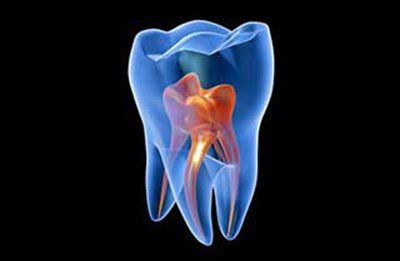Complete Oral Exams

In addition to performing diligent oral care at home, you should see your dentist every six months for an oral exam to ensure continued health of your teeth and gums. If you skip just one routine checkup with your dentist, any new oral health issues can rapidly advance and require expensive and invasive treatments. Regular checkups ensure that problems can be caught early and treated conservatively, and some oral health issues can even be reversed if spotted in the earliest stages. If allowed to advance, however, these problems with your teeth or gums can actually spread beyond your mouth and affect your general health.
If you have not undergone dental X-rays for some time, your dentist will obtain images of your teeth and jaws at your first appointment. The frequency with which you receive X-rays after that depends upon your dental history and risk of developing tooth decay. Dental X-rays can help detect cavities, tooth eruption issues or bone loss in the jaws.
Simple CleaningDeep Cleaning (per quadrant)

A professional teeth cleaning is recommended every six months, so you may want to combine your checkup and cleaning appointments for the sake of convenience. Your hygienist will begin your cleaning by removing tartar buildup with an instrument called a scaler to help prevent gum disease. After scaling, your hygienist will polish your teeth with a paste that contains mild abrasives to remove plaque and surface stains, leaving your teeth smooth and less likely to collect oral bacteria. If indicated, you may also receive a fluoride treatment that helps remineralize your tooth enamel and reduce your risk of developing cavities.
Composite Fillings (Tooth Color)

Dental fillings replace parts of a tooth that has been damaged due to injury or decay. Also known as dental restoration, a filling preserves the integrity of the tooth and prevents further damage from cavities. Fillings can also restore the chewing surfaces of teeth that have become worn. Avoiding damage from decay or injury is preferable, but fillings are a good way to prevent the eventual loss of a tooth. Most cavities and fractures that are caught early are good candidates for restoration with fillings.
Composite resin fillings resemble a specialized epoxy and contain particles of silica or ceramics in a polymer matrix. They can be blended to match the color of the surrounding tooth material, making restoration less noticeable than it is with metal fillings. They also spare more of the original tooth during the filling process.
Simple Extractions Surgical Extractions (Wisdom Teeth)

A dental extraction is the removal of teeth from their socket in the jaw bone. Extractions are performed for a wide variety of reasons, but most commonly to remove teeth which have become unrestorable through tooth decay, periodontal disease or dental trauma, especially when they are associated with toothache. Sometimes wisdom teeth are impacted (stuck and unable to grow normally into the mouth) and may cause recurrent infections of the gum (pericoronitis). In orthodontics if the teeth are crowded, sound teeth may be extracted (often bicuspids) to create space so the rest of the teeth can be straightened.
Tooth extraction is usually relatively straightforward, and the vast majority can be usually performed quickly while the individual is awake by using local anesthetic injections to eliminate painful sensations. Local anesthetic blocks pain, but mechanical forces are still vaguely felt. Some teeth are more difficult to remove for several reasons, related to the tooth's position, the shape of the tooth roots and the integrity of the tooth. This is when simple extractions become surgical.
Complete Dentures

Dentures, also known as false teeth, are prosthetic devices constructed to replace missing teeth; they are supported by the surrounding soft and hard tissues of the oral cavity. Conventional dentures are removable (removable partial denture or complete denture). There are two main categories of dentures, the distinction being whether they are used to replace missing teeth on the lower arch or the upper arch.
Fabricating dentures usually takes 3-4 appointments
1. Impression Day
(upper and lower alginate impressions)
2. Measurment Day
(Measure your bite and jaw relation)
3. Wax Try-In
(Check the color, size and shape of your teeth)
4. Delivery
(Receive your denture and adjust as needed)
All dentures and partial dentures come with 3 free adjustment visits
Valplast Partial Dentures

Valplast is a flexible base resin ideal for partial dentures or unilateral restorations. The biocompatible nylon and thermoplastic resin of Valplast provide the perfect degree of flexibility and stability when processed and finished to the recommended thickness. The color, shape, and design of Valplast partials blend seamlessly with the natural appearance of the gingival tissues, making the prosthetic virtually invisible. The strong, durable plastic snaps securely and comfortably into place around the existing natural dentition and gingiva. The strength of the nonallergenic plastic eliminates the metallic taste and enables the partial to be fabricated thinly enough with nonmetal clasps to avoid the bulky feeling often encountered with ugly, bulky traditional metal partials.
Fabricating Partial Dentures can take 2-4 appointments depending on how many remaining healthy teeth are present. The appointments follow similarly to the complete denture process.
Cosmetic Porcelain CrownsCosmetic Porcelain Bridge

Cosmetic E-max crowns are made from a single block of lithium disilicate ceramic: this is a top grade material which has been harvested for its toughness, durability and opaque qualities which makes it a highly prized crown. Plus it is considered a breakthrough in dental crown technology. There is absolutely no metal and tooth preparations can be more conservative which can reduce sensitivity.
A dental bridge is a structure in which a false tooth and two crowns are attached to a tough porcelain base which acts as a replacement for missing teeth. The false tooth sits in the gap and is flanked by the two crowns which fit over the natural teeth on each side of the gap. In other words, it 'bridges' the gap in your teeth. Bridges can span from 3 units to 14 units per arch.
A zirconia bridge is considered a top quality type of bridge which is stronger, durable and visually appealing as compared to other types of bridges. It is often chosen over metal ceramic bridges in that it causes less tooth sensitivity and with no sign of the dreaded grey line around the edge of the gums.
Root Canal Therapy

Root canal therapy is a treatment used to repair and save a tooth that is badly decayed or infected.
A root canal procedure is performed when the nerve of the tooth becomes infected or the pulp becomes damaged. During a root canal procedure, the nerve and pulp are removed, and the inside of the tooth is cleaned and sealed.
Root canal procedures have the reputation of being painful. Actually, most people report that the procedure itself is no more painful than having a filling placed. The discomfort experienced in the period leading up to seeking dental care is truly painful, not the root canal procedure itself.
Root canals on most front teeth can be completed in our office. Remember, all teeth that have been through root canal therapy must receive a crown soon after treatment. This will increase the longevity of the tooth and prevent reinfection.
Juvederm Lip Injections

JUVÉDERM injectable gel is for shallow and deep injections in the cheek area, lips, and around the mouth to correct age-related volume loss in adults over 21. This dermal filler can be placed into the facial tissue for the correction of moderate to severe facial wrinkles and folds (such as nasolabial folds or marionette lines). It can also be used in the lips and perioral area for lip augmentation, asymmetry and treat diseases at the corner of the mouth.
Botox (Xeomin)Therapeutic

Botox/Xeomin is used as an alternative treatment for TMJ (temporo-mandibular joint) disorders and associated jaw tension and pain. When injected into facial muscles afflicted with soreness and discomfort, Botox/Xeomin relieves TMJ and jaw tension for many patients. The injections often eliminate headaches resulting from teeth grinding, and, in cases of severe stress, Botox/Xeomin can even minimize lock jaw. Although Botox/Xeomin treatment for these conditions is presently experimental; evidence indicates that it can be extremely effective.
Excessive gingival display, or a “gummy smile” as it is more commonly called, is a cosmetic condition that occurs when the upper gums are too prominent when smiling. ... Botox/Xeomin has been shown to effectively treat the appearance of a gummy smile and is a much more manageable procedure to receive than surgery.
Opalescence GO ! Bleaching Kits

Opalescence Go is the perfect option for patients who are looking for convenient, ready-to-go whitening. A professional whitening gel delivered in prefilled, disposable trays, Opalescence Go features the enhanced UltraFit™ tray and can deliver dramatic results in as a little as 15 minutes per day.
The UltraFit tray sets Opalescence Go apart with its unique material that warms with the temperature of the body so that it comfortably molds and adapts to any patient’s smile for an even more effective and enjoyable whitening experience.
With no impressions, models, or lab time required, Opalescence Go is the professional alternative to less-effective over-the-counter options and is an excellent introduction to whitening as well as a perfect follow-up to in-office whitening.